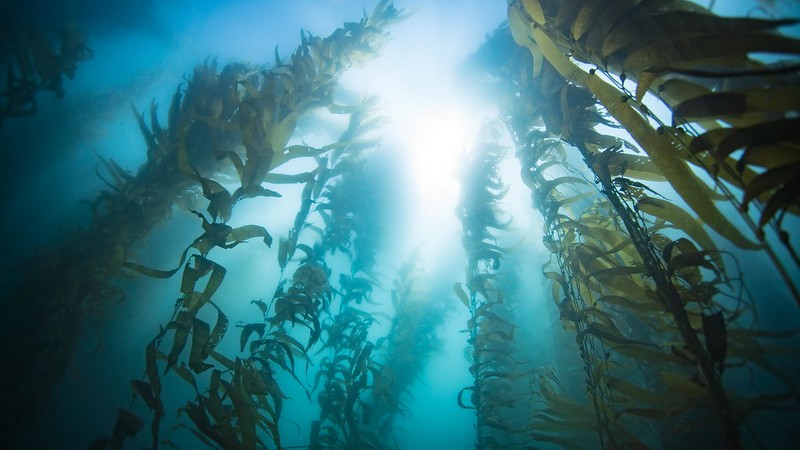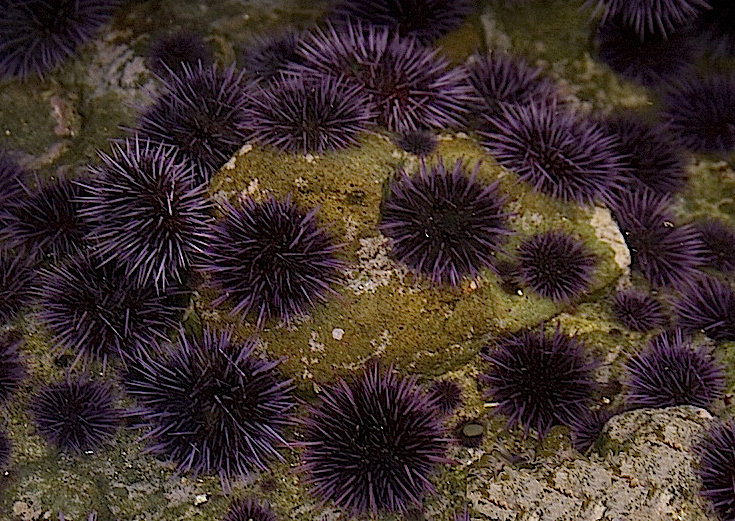 Have you seen underwater forests of large brown algae? A visit to the Monterey Bay Aquarium in California would bring you up close to these amazing kelp ecosystems.
Have you seen underwater forests of large brown algae? A visit to the Monterey Bay Aquarium in California would bring you up close to these amazing kelp ecosystems.
Unfortunately, these lush, green canopies of tangled kelp are in danger.
The culprit? Purple sea urchins have been expanding and eating kelp at a devastating rate -- over 90% of kelp forests have disappeared in just the last seven years.
This has impacted coastal ecosystems and seafood businesses, even as people are scrambling to find solutions.
The Purple Urchin Problem
 Kelp forests are an important part of the ocean ecosystem. Similar to trees and plants, kelps produce food through photosynthesis and support many species further up the food chain.
Kelp forests are an important part of the ocean ecosystem. Similar to trees and plants, kelps produce food through photosynthesis and support many species further up the food chain.
The base of the kelp, where it is anchored to the ocean floor, provides habitats for sea urchins, sea stars, and sponges. The swaying stems are home to fish, crabs, and octopi, while at the surface, sea otters cling to the kelp to keep from drifting while eating or taking a nap!
The problem began when intense ocean heatwaves, known as marine blobs, hit the California coast in 2013-2014. The warm waters led to a massive die-off of the sunflower sea stars that feed on purple sea urchins. Sea otters, another natural predator, have also dwindled in numbers from hunting and other environmental factors.
As a result, the once thick kelp forests are now “urchin barrens,” where purple urchins carpet the seafloor. Unfortunately, purple sea urchins can survive for decades while starving, waiting to feed on kelp the minute it appears.
The Search for a Solution
 Environmentalists and businesses are working together to find solutions.
Environmentalists and businesses are working together to find solutions.
One nonprofit, Reef Check, is hiring divers to collect purple sea urchins from the seafloor which are then composted or used as paving. Scientists are already seeing kelps make a comeback in these areas.
Red sea urchins, also found in kelp forests, are prized for their meat known as uni. However, purple sea urchins have very little uni, making them uneconomical for harvest.
Last year, researchers from UC Davis partnered with a company called Urchinomics to harvest purple sea urchins. These urchins were fed on pellets made from seaweed to increase their content of uni which can then be sold. The results have been encouraging so far.
There are also programs to reintroduce the sunflower sea stars and otters to Northern Californian waters. Scientists hope a mix of these solutions will help revive kelp forests even as climate change continues to affect ocean temperatures.
Sources: NY Times, Forbes, NPR, ucsb.edu






